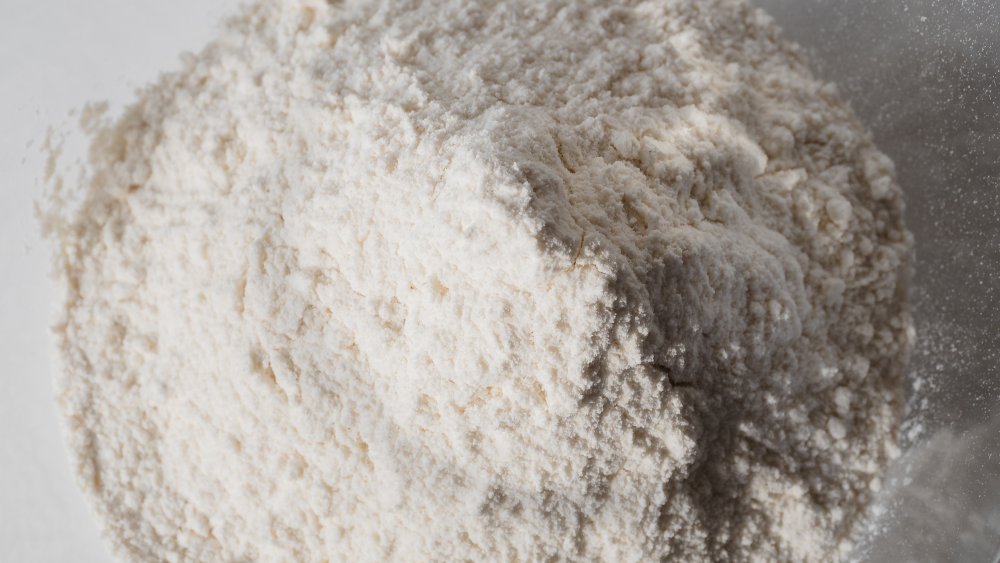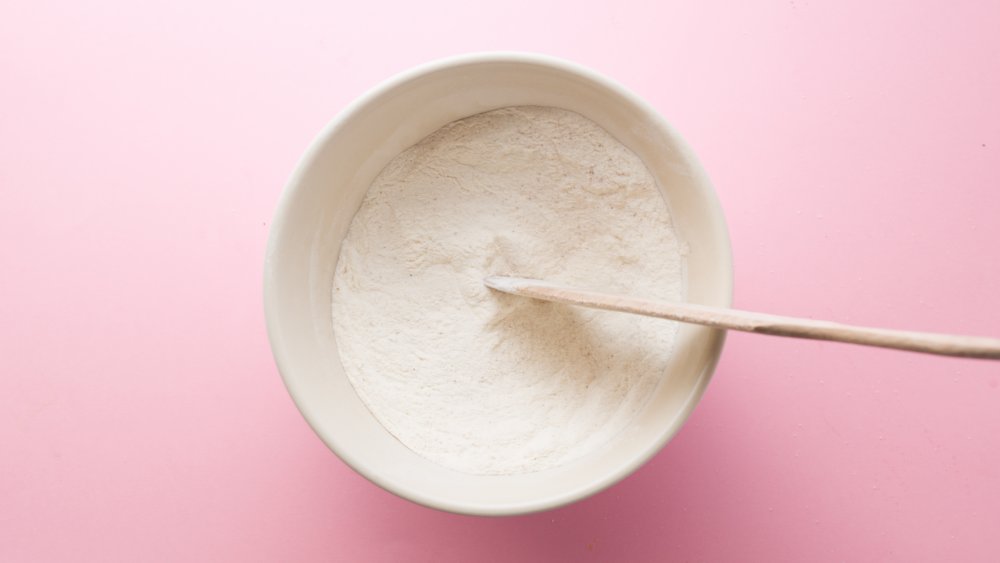Here's What You Can Substitute For Self-Rising Flour
Most baking recipes, unless you're deliberately trying to adhere to a gluten-free or another specialty diet, tend to call for one of two different types of flour — either all-purpose or self-rising. So are these basically the same thing? If not, how different are they? Can you just swap one for the other, or what?
Well, the answer is, it depends. All-purpose flour is your basic wheat flour, made from both hard and soft types of wheat, but with all of the bran and wheat germ removed. If you leave those in, you get whole wheat flour (the brown stuff). Self-rising flour starts out with a base of all-purpose flour, but adds in baking powder and salt. While all-purpose flour tends to be used for pies, cakes, and cookies, as well as for coating meats and thickening sauces, self-rising flour is called for in recipes such as biscuits, muffins, and pancakes where you want a soft-tender product with a little bit of "lift" to it (via MyRecipes).
In a recipe that calls for all-purpose flour, you can usually substitute self-rising, but you may need to adjust some of the other ingredients. Specifically, when replacing one cup of all-purpose flour with self-rising, reduce the baking powder by up to a teaspoon and a half and the salt by up to half a teaspoon. If the amounts called for are smaller, i.e. only 1/4 teaspoon of salt, then eliminate those ingredients altogether.
What you can use to replace self-rising flour
If you only have all-purpose flour and your recipe calls for the self-rising kind, your best bet is to make your own DIY version. Thankfully, it's quite simple — for each cup of flour needed, just measure out a cup of all-purpose flour, and then add in a teaspoon and a half of baking powder (not baking soda, although these two ingredients are frequently mistaken for one another) and a half teaspoon of salt. Whisk these dry ingredients together, and you'll be all set to bake.
Should you wish to make a self-rising version of whole wheat flour, Food.com assures us this is also possible to do, although they suggest adjusting the amounts a bit. Use one and a quarter teaspoons of baking powder and one quarter to one half teaspoon of salt per cup of flour.

